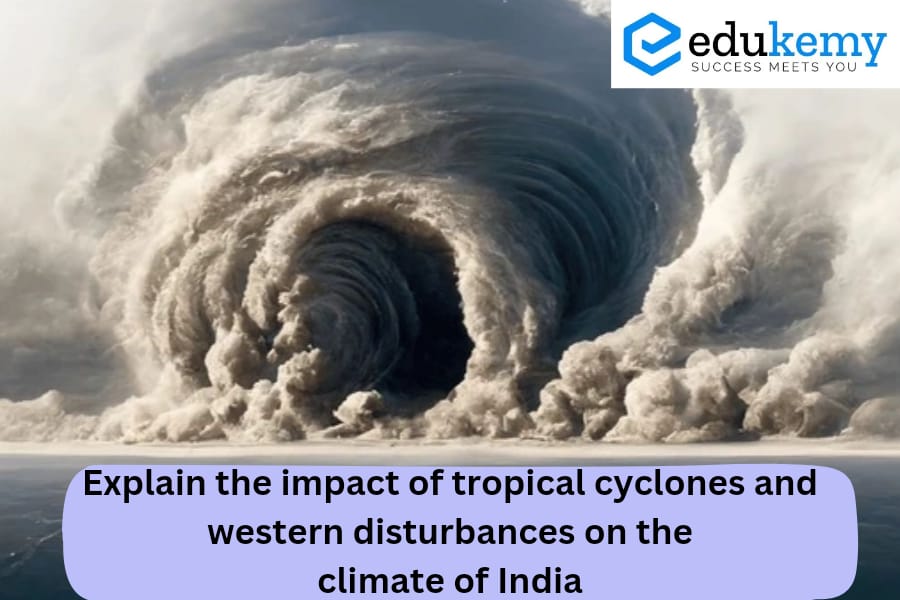
Tropical cyclones are intense storms characterized by low-pressure centers and strong winds, typically forming over warm ocean waters. Western disturbances, on the other hand, are extratropical storm systems originating from the Mediterranean region, bringing precipitation to parts of India during the winter months.
Contents
Impact of Tropical Cyclones on the Climate of India:
- Seasonal Occurrence: Tropical cyclones primarily occur during the pre-monsoon and post-monsoon seasons, affecting different parts of India.
- Intense Rainfall: These storms bring heavy rainfall, particularly along the eastern coast and northeastern states, leading to flooding and landslides. For example, Cyclone Amphan in 2020 caused extensive flooding in West Bengal and Bangladesh.
- Wind Damage: Strong winds accompanying cyclones cause significant damage to infrastructure, agriculture, and settlements. The destruction caused by Cyclone Fani in Odisha in 2019 is a notable example.
- Temperature Regulation: Cyclones can temporarily reduce high temperatures by inducing cloud cover and precipitation, providing relief from heat waves in affected regions.
- Salinity Intrusion: Coastal areas may experience intrusion of saltwater, affecting agriculture and freshwater sources, as seen during Cyclone Aila in 2009. Impact of Western Disturbances on the Climate of India:
- Winter Precipitation: Western disturbances bring rainfall and snowfall to northern and northwestern parts of India during the winter months, crucial for winter crop cultivation.
- Temperature Variation: These disturbances influence temperature patterns by bringing cold air from the Mediterranean region, leading to a decrease in temperatures in affected areas.
- Snowfall: High-altitude regions experience snowfall, which replenishes water sources for downstream areas and supports ecosystems. The western disturbances in the Himalayan region contribute significantly to the annual water budget.
- Hailstorms: Occasionally, western disturbances are associated with hailstorms, impacting crops and agricultural productivity in affected regions.
- Impact on Tourism: Snowfall in regions like Himachal Pradesh and Uttarakhand attracts tourists, contributing to the local economy but also posing challenges for transportation and infrastructure.
Combined Impact:
- Regional Variability: Cyclones primarily affect coastal regions, while western disturbances influence northern and northwestern parts of India.
- Water Resources: Both phenomena contribute to the replenishment of water resources, crucial for agriculture and drinking water supply.
- Agricultural Impacts: While cyclones can damage crops in coastal regions, western disturbances play a vital role in supporting winter crop cultivation.
- Economic Impact: Damage caused by cyclones and disruptions caused by western disturbances can have significant economic consequences, especially for agriculture, infrastructure, and tourism sectors.
Conclusion:
To mitigate their adverse effects, investments in early warning systems, infrastructure resilience, and sustainable land-use practices are essential. Additionally, enhancing international cooperation in weather forecasting and disaster response can help mitigate the impacts of these extreme weather events in the future.
In case you still have your doubts, contact us on 9811333901.
For UPSC Prelims Resources, Click here
For Daily Updates and Study Material:
Join our Telegram Channel – Edukemy for IAS
- 1. Learn through Videos – here
- 2. Be Exam Ready by Practicing Daily MCQs – here
- 3. Daily Newsletter – Get all your Current Affairs Covered – here
- 4. Mains Answer Writing Practice – here

